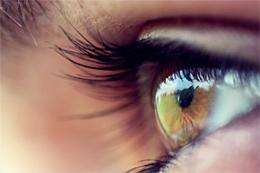'Quake' reveals how eyes and ears keep us balanced

(PhysOrg.com) -- An earthquake machine has been used by vision scientists to confirm that instead of working in isolation, our visual and middle-ear systems work together, to give us an improved sense of balance.
The Earthquake machine at Questacon, the National Science and Technology Centre, has been used in groundbreaking research by vision scientists to confirm that instead of working in isolation, our visual and middle-ear systems work together, to give us an improved sense of balance.
Led by Dr Mark Edwards and Dr Michael Ibbotson, chief investigators in The Vision Centre and researchers at the Australian National University, this research has opened up various opportunities to future research, including potentially developing ways to reduce motion sickness, a phenomenon that affects millions of people.
“When we move through the world two sensory systems are activated: our visual and vestibular (or middle ear) systems,” Dr Edwards explains.
“The images on our eyes undergo complex patterns of motion, called optic-flow patterns, that indicate the type of movement we are making, e.g. radially expanding patterns indicate forward motion, and contracting patterns backward motion.”
“The vestibular system consists of fluid-filled channels in our inner ear and it responds to the inertial forces produced by changes in our speed or direction of movement.”
The parental anecdotes of having children close their eyes when they are affected by motion sickness, hence removing visual input, seems to suggest a functional interaction between these two systems.
In a unique experiment using equipment that has enthralled thousands of visitors to Questacon, young and old, Dr Edwards and Dr Ibbotson have demonstrated both our visual and vestibular systems are far more closely interconnected than was previously thought.
“The sense of balance comes from both our sight and vestibular system working in combination, but it has never been previously demonstrated that the two are functionally connected in humans,” Dr Edwards says.
The research was conducted using a most unusual piece of research equipment, the Earthquake machine, which simulates the effect of an earthquake. Using it, the research team was able to measure the sensitivity of volunteers to optic-flow patterns when they were physically moved in a direction that was either consistent or inconsistent with that pattern being received by the eyes. For example, sensitivity to a radially-expanding pattern when they were moved either forwards (consistent) or backwards (inconsistent).
“We predicted that if the visual and optic-flow systems were functionally linked, then sensitivity to motion would be greater when the two signals were consistent, and the two signals could facilitate each other, compared to when they were inconsistent. This is the pattern of results we obtained.”
The ability of the visual system and the inner ear to work together would be of greatest importance under conditions where both signals are relatively weak, for example, when produced by body sway while maintaining balance. It may also be of importance in dealing with effects such as motion sickness.
The team is also considering the possibility that this crosstalk between the senses is different for each individual, depending upon their need to maintain balance. A next step is to find out how these systems actually talk to each other so we can fine tune our ability to maintain balance.
















